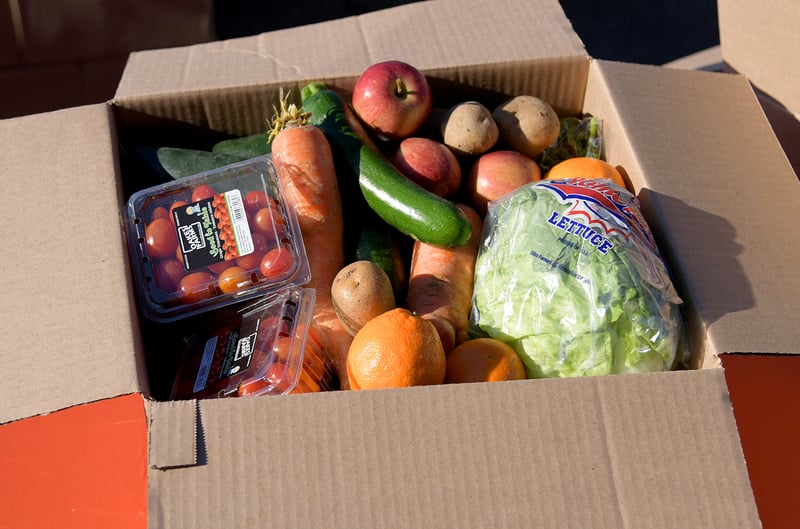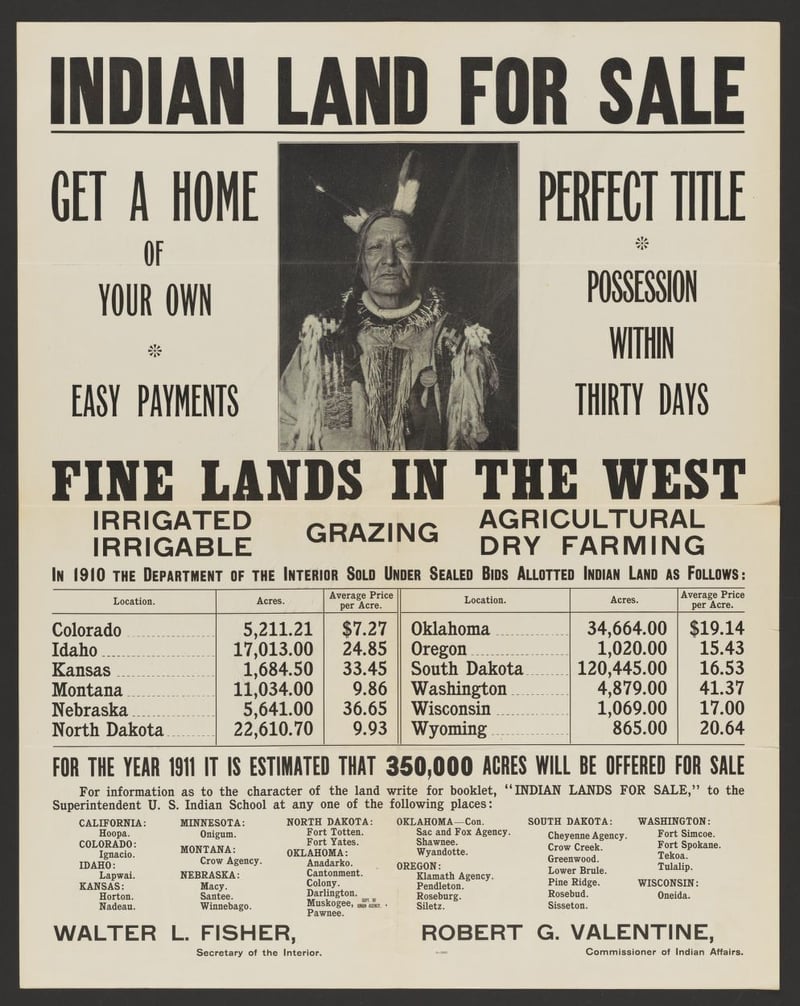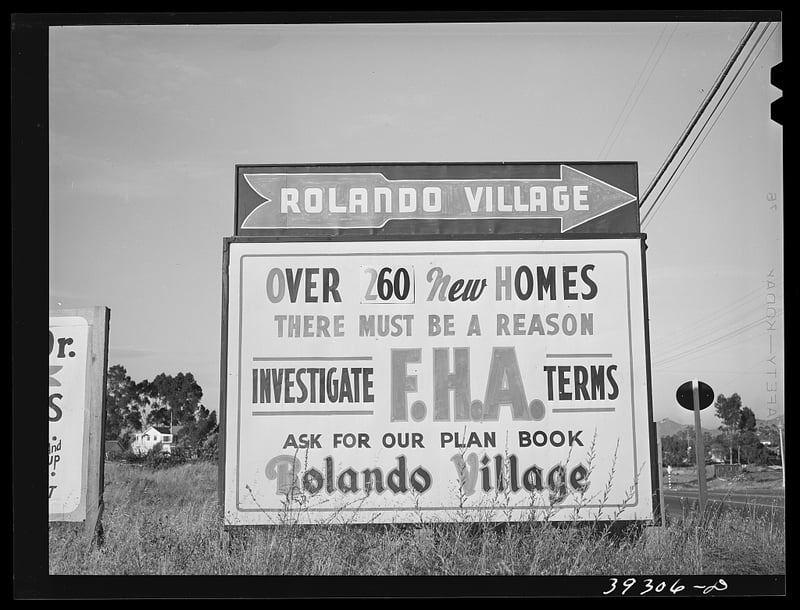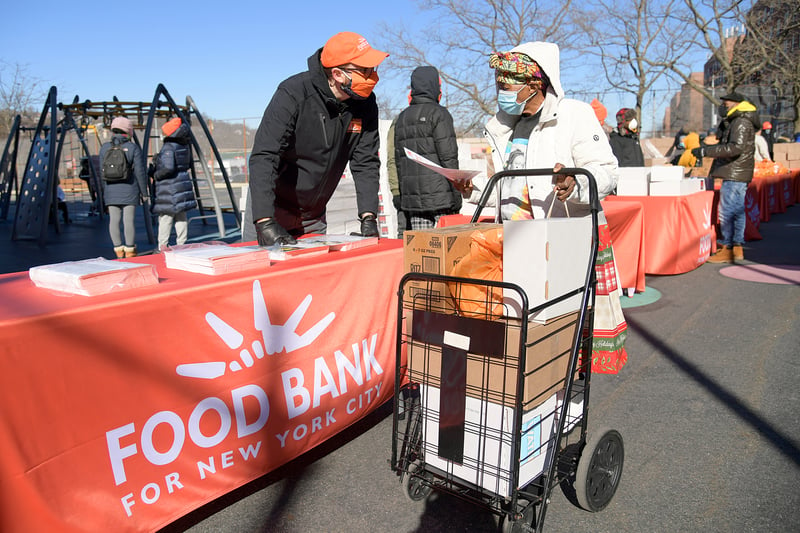In this article, we’re going to examine where and how the issues of food justice and racial justice intersect. We’ll dig into a little history, consult with some research, and chat about how we address this intersection here at Food Bank For New York City.
A small disclaimer before we get started: This is a huge topic, and I won’t be able to cover all of it in this post. Important things will be left out, simply because no single article can capture the breadth and complexity of this intersection. My intention here is to light a fire in your belly, to get you excited to learn more, and ultimately to do something! That’s why I’ve included a round-up of links and resources for further reading at the bottom of this page.
Last disclaimer, I PROMISE: The beliefs, thoughts, and opinions expressed herein are my own and don’t reflect those of Food Bank For New York City at large.
Now let’s dive in!

The Power of Stories
As community activist LaDonna Redmond so brilliantly exclaims in her 2013 TEDx Talk Food + Justice = Democracy: “Food Justice is about the narratives of people of color. The stories we tell ourselves about the food movement are as important as the ones we’ve left out.”
This is a crucial grounding for us to keep in mind as we dig in today. As Redmond explains, there is no way to talk about the fight against hunger without acknowledging the violence and racism that created our modern industrial food system in the first place.
Not only was this system quite literally built on the backs of slaves, but it continues to actively oppress communities of color by limiting their access to nutritious, affordable food via strategies like redlining (wherein services and goods are denied by the government either directly or through the selective raising of prices) and food apartheid (wherein communities are intentionally segregated to block equitable access to resources).
Our food system has also historically benefitted from the subjugation of Indigenous people. In a trio of cases tried in the 1800s (the so-called “Marshall Trilogy”), the Supreme Court legalized the theft of Native land. The first of these rulings came down in 1823 when Chief Justice John Marshall established the “Discovery Doctrine,” which stated that the United States’ “right of discovery” of these lands was more legitimate than Indigenous communities’ “rights of occupancy.”
Um... what? Yes, a government we created out of thin air was able to assert ownership over millions of acres of fertile, food-producing land that rightfully belonged to Indigenous people... all by means of a legal decision that was also created out of thin air.
These are the stories we tell ourselves.
These are the stories we leave out.
I bring up the “Marshall Trilogy” to illustrate how racism and oppression have been baked into our country (and our food system) from its inception. Our founding fathers clearly understood one simple and insidious truth: Whoever controls the food and the land controls the people.

The Power of Policy
This notion of control is at the heart of the food justice movement: Who controls where the grocery stores are built? Who controls which schools get cafeteria equipment to cook fresh meals? Who controls which crops are grown? Who controls how and for whom food is distributed?
So often, the answer lies somewhere in the government, where control is exercised through complicated policies that entrap communities slowly over time. In its report “Building the Case for Racial Equity in the Food System,” the Center for Inclusion says this is why we must look “at the food system through the lens of policies, institutions, and people together.”

To illustrate this point, the report spotlights the Federal Housing Administration (FHA), which was created after the Great Depression to provide loans to families so they could buy homes.
Though it may have been a fantastic idea on paper, the loan program was highly discriminatory in practice – throughout the 1930s and 50s, only 2 percent of these loans went to people of color. And the FHA greatly favored suburban homes over urban ones, which promoted a “white flight” from city centers.
This is also where redlining first appears, as Black and Brown communities were colored red on official FHA-sponsored insurance maps to indicate that they were “dangerous” and “high-risk” investments for the administration.
What does any of this have to do with food? Well, when people left the cities, grocery stores soon followed, as did federal funding for vital infrastructures like highways and roads. This monetary divestment diminished spending on things like public transportation, which made it difficult for city folk to get to the few food retailers that remained. This led to the creation of “food deserts,” or areas where there was limited access to nutritious and affordable food. And of course, the suburbs didn’t magically appear overnight – they were wrought from the land, which reduced space for farming.
This is just one example of how seemingly innocuous policy can, and continues to, disproportionately impact communities of color. In this case, the racial segregation encouraged by the FHA critically changed how Black and Brown people were able to get the food and resources they needed. That we can still feel this disparity in our cities today speak volumes to the lasting power of public policy.

The Power of Community
So, how do we fight back against these disparities? One solution is to align the fights for food and racial justice. This idea began to take shape in the late 1960s, when the Black Panther Party established the “Free Breakfast for School Children Program.” This initiative was built on a simple premise: BPP volunteers would source ingredients from local grocery stores, cook up the meals, and provide them to students in food insecure communities, all without costing their families a dime.
The program started in Oakland, CA, in 1969 but quickly spread to cities across the United States. At its peak, the project was serving thousands of children every day. Unsurprisingly, this success was met with fierce opposition by the government, who worked tirelessly to shut the whole thing down. They eventually did, but the program was so popular that the USDA had little choice but to federalize their own School Breakfast Program in 1975.
Was the government angry over free grits and eggs? No. Were they terrified of what collaborative community organization might mean for the racist systems they’d built? You tell me.

When I asked Food Bank’s Senior Director of Member Engagement Zanita Tisdale whether or not food justice was possible without racial justice, she answered with a resounding “No.”
How can we attempt to dissociate food insecurity from the very people who have been economically marginalized since long before the Jim Crow era? When you look at communities most significantly impacted by food insecurity... the connection to racial disparities is clear. Black Americans face hunger at twice the rate of white, non-Hispanic Households.
For Tisdale, the work, then, is about harnessing community power to fill in the gaps that food insecurity leaves behind. As the free school breakfasts provided by the Black Panthers helped children stay awake and alert in class so they could earn better grades, the free meals and pantry goods provided by Food Bank helps to combat the economic structures that hold many food-insecure Black families in stasis.
Access to food that is nutritious and affordable should be a basic human right. But because this right is not always guaranteed, Food Bank commits to providing those very food items for free to those who are most marginalized by systemic racism to contribute to the ability for Black families to have a fighting chance at upward economic mobility.

The Power of Moving Forward
But it’s not just about getting free food to people who need it. To sustain the fight against hunger in historically marginalized communities, local leaders must be empowered with resources, knowledge, and support.
From Tisdale’s perspective, there’s a lot that hunger-relief organizations like Food Bank can do to help dismantle systemic racism. For her, it’s all about working to not only identify areas of high need, but to drive resources directly to them. That’s why Food Bank works with an extensive network of over 800 member agencies on the ground to make sure we’re always meeting hunger wherever it is.
We’re also launching a new professional development series for the leaders of color that power many of these member organizations:
Food Bank's Masterclass series is designed to enhance organizational infrastructure for our member non-profits' leaders of color. The series leverages both non-profit expertise and corporate resources to educate participants on HOW to best position their organization to operate with strong business acumen to weather any storm.
In some cases, moving forward can also resemble a return to the land. This is at least what Leah Penniman strives to do at Soul Fire Farm in Grafton, NY. There, the educator, farmer, author, and food justice activist teams up with local members of the community to equip them with the knowledge they need to farm and work the land.
Penniman is part of a growing movement of Black and Brown farmers tackling food insecurity and hunger by harnessing the agrarian traditions of their ancestors. As she explains in a recent conversation with Dr. Mark Hyman: “Part of the solution to poverty and injustice in our food system is bringing everybody back to a right relationship with our food and our land.”
Final Thoughts
Access to delicious, nutritious, and healthy food must be a human right: pointblank, period. But because it is not, the issue of food justice must inherently become one of racial, economic, and housing justice, too. Time is also up for the systems governing our immigration policies and law enforcement practices – they can NO longer escape reform. Justice must include these things (and more) because food insecurity is a product of oppression and it can only be rooted out by disrupting the systems that hold communities of color down.
For more on this topic, check out the resources below!
“Food Justice and Racism in the Food System” - Roots of Change
“Principles of Food Justice” - Institute for Agriculture & Trade Policy
“Dismantling Racism in the Food System” - Food First
“Voices from the Field: COVID Crisis Reinforces the Hunger Industrial Complex” - Nonprofit Quarterly
And of course, be sure to sign up to join our Action Team to get updates on all of the justice work we’re doing here at Food Bank and to learn how you can get involved!
Post Topic(s): ADVOCACY | RESEARCH
